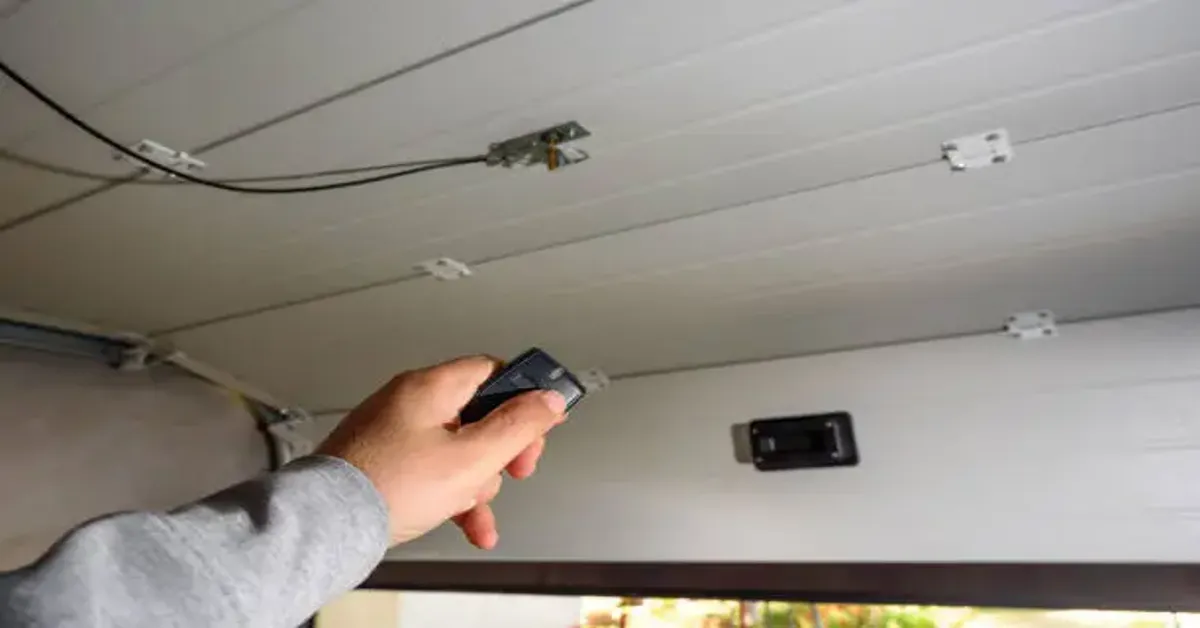Garage door openers have become essential for many homeowners, offering convenience, security, and ease of access. As technology advances, various types of openers have emerged, each with unique features suited to different garage setups and personal preferences. Maintaining these systems is crucial to ensure their longevity and smooth operation. We will explore the common garage door opener types and the specific maintenance tasks that keep them functioning well over time. Understanding these can help homeowners avoid unexpected breakdowns and costly repairs, ensuring their garage door remains reliable day after day.
Types of Garage Door Openers and Their Maintenance Needs
- Chain-Drive Garage Door Openers
Chain-drive openers use a metal chain to pull or push the garage door open and closed along a track. This type of opener is known for its durability and strength, making it suitable for heavier garage doors, including wooden or steel doors. While it tends to be noisier than other models, chain-drive openers are often more affordable and reliable. For those seeking garage door service in Orlando, FL, chain-drive openers are a common choice due to their sturdy performance. Regular maintenance for these systems involves lubricating the chain to reduce noise and wear.
Applying a high-quality lubricant specifically designed for garage door chains every six months helps prevent rust and ensures smooth movement. Additionally, checking the chain tension is important because a loose chain can cause jerky motion or even slip off the sprocket, while a chain that is too tight may strain the motor or other components. Keeping the track clean and free of debris is another essential task to avoid operational issues.
- Belt-Drive Garage Door Openers
Belt-drive openers function similarly to chain-drive openers but use a rubber belt instead of a metal chain to move the door. This makes them significantly quieter, which is an advantage for homes with living spaces above or near the garage. Belt-drive systems offer smooth and consistent performance, though they may be slightly more expensive than chain-drive models. Maintenance of belt-drive openers is generally less demanding, but it still requires attention to keep the belt in good condition. Regular inspection for signs of wear, cracking, or stretching is necessary to avoid sudden failures. Lubrication is typically not required for the belt itself, but the rollers and hinges of the garage door should be lubricated to minimize friction. Ensuring the belt remains properly aligned and tensioned also prevents premature wear and helps maintain the opener’s efficiency.
- Screw-Drive Garage Door Openers
Screw-drive openers use a threaded steel rod to move the garage door along the track. The motor turns the screw, which directly moves the trolley that pulls or pushes the door. This type of opener is favored for its fewer moving parts compared to chain and belt drives, reducing the chances of mechanical failure. Screw-drive systems are generally quieter than chain drives but can be noisier than belt drives. Maintenance involves lubricating the screw with a suitable grease every few months to keep it running smoothly and prevent corrosion. Unlike chain and belt drives, screw-drive openers are less sensitive to temperature changes, but keeping the screw clean and free from debris is important to avoid operational issues. Checking the entire assembly for loose bolts and ensuring the trolley moves smoothly along the screw is also essential for reliable performance.
- Direct-Drive Garage Door Openers
Direct-drive openers feature a unique design where the motor itself moves along a stationary chain or track, eliminating the need for separate drive components like chains, belts, or screws. This design results in exceptionally quiet operation and fewer moving parts, which can reduce the need for maintenance. These openers are well-suited for residential use, especially in homes where noise reduction is a priority. Maintenance tasks for direct-drive systems are relatively simple but still necessary to ensure long-term functionality. Periodic inspection of the track and motor assembly is crucial to detect any signs of wear or misalignment. Lubrication is typically minimal due to the limited moving parts, but the garage door’s rollers and hinges still require regular lubrication to maintain smooth operation. Keeping the tracks clear of dirt and debris prevents obstruction and extends the system’s lifespan.
Maintaining a garage door opener requires understanding the specific type installed and performing routine upkeep tailored to that system. While chain-drive openers benefit from regular lubrication of the chain and tension checks, belt drives need monitoring of belt condition and alignment. Screw drives require greasing the screw and cleaning debris, while direct-drive systems focus on track inspection and minimal lubrication. Smart openers add an electronic maintenance layer involving software updates and sensor care. Regular maintenance not only prolongs the life of the opener but also enhances safety and performance, reducing the risk of malfunction at inconvenient times.
Proper upkeep ensures that a garage door opener continues to provide smooth, quiet, and secure operation for years. Neglecting maintenance tasks can lead to premature wear, increased noise, and potential system failures that might result in costly repairs or replacements. By understanding the specific needs of the opener type and committing to scheduled maintenance, homeowners can protect their investment and enjoy the convenience of reliable garage door operation daily. Taking time for these simple yet important tasks contributes significantly to the overall safety and functionality of the garage, enhancing peace of mind and property value.
Garage door openers come in various types, each with distinct maintenance requirements. Recognizing these differences and following a regular maintenance routine helps prevent unexpected issues and extends the life of the system. From chain and belt drives to screw and direct-drive models, and even smart openers with electronic features, each system benefits from attention to its moving parts and overall condition. Regular lubrication, inspection, cleaning, and electronic updates form the foundation of effective maintenance. With proper care, homeowners can ensure their garage door openers continue to operate smoothly, quietly, and securely, adding convenience and safety to daily life.

